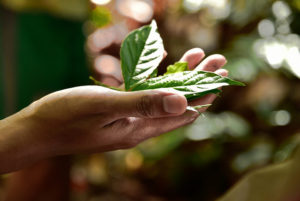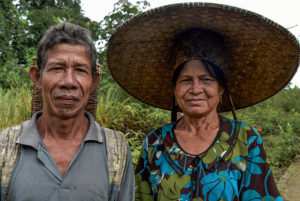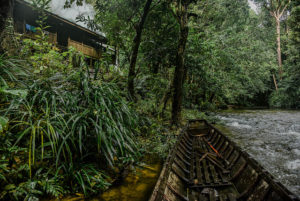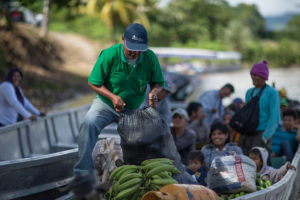
The average annual financing for REDD+ of US$323 million might sound like a lot on its own, but compared to the US$41 billion spent on agricultural subsidies and biofuel, it is just a drop in the bucket.
This is one of many findings elucidated in a forthcoming study on funding for reduced emissions from deforestation and forest degradation (REDD+).
The study was led by the international consulting group COWI, along with the Öko-Institut and scientists from the CGIAR Research Program on Forests, Trees and Agroforestry’s (FTA) lead center, the Center for the International Forestry Research (CIFOR).
The team studied REDD+ funding from 2008 to 2015 to see where it went and how it was spent. A preview was given at Does money go to trees?: Assessing finance flows to maximize the impact of REDD+, an official side event at the recent Bonn Climate Change Conference.
FOLLOW THE MONEY
CIFOR team leader Christopher Martius, who is the leader of FTA’s research theme on climate change adaptation and mitigation, presented some of the study’s findings, starting with the fact that there are two types of funding related to REDD+: indirect funding, which is dedicated to deforestation efforts at large; and direct funding, which goes solely to REDD+ efforts.
The study found that donors commit and disperse much more indirect than direct funding, as the former covers a wider set of issues and tools. Indirect funding also came from a diverse mix of sources – grants, official flows, loans and equity investments – while 99% of direct funding came from official development assistant (ODA) grants. Viewed as aid rather than profit-producing investment, these grants do not make REDD+ attractive from the business world’s point of view.
REDD+ projects go through three stages: readiness, implementation and payment for results. Funding is still needed for the first two stages to get to the third.
“Support for readiness is going down,” said Martius. “People want to go to payments. But we are not there yet.”
Many developing countries with high emissions reduction potential but low capacity not only rely on funding for readiness and implementation, but also need support that is tailored to their needs, and that balances effectiveness and equity.
What’s more, funding is not everything. It also requires functional systems in place to ensure proper governance, accountability and transparency.
The study found it difficult to determine how much private finance REDD+ efforts receive. Despite growing private sector responsibility and recent commitments to reduce deforestation and improve transparency, the scale and flow types are still opaque.
Martius, however, said that fixating on fund flows and their size alone can distract from looking instead for larger ‘triggers for transformational change’. He instead stressed the importance of mainstreaming climate objectives across financial sectors.
“We need to integrate participation, development and climate objectives for conflict-free, lasting results,” he said.
Read more: Unlocking private finance for climate and sustainable development
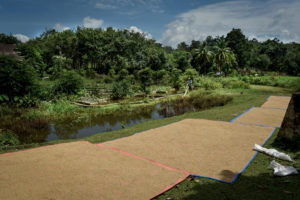
IN THE BLEND
Rather than relying on funds from single revenue streams, countries can – and should, the scientists said – look to diversify their capital sources, in what is known as blended finance.
Peter Minang, a principal scientist at the World Agroforestry Centre (ICRAF) and the leader of FTA’s research theme on landscape dynamics, spoke about how this has manifested in Cameroon. In a performance-based payment experiment where donors are funding community forest enterprises, data is showing positive results for emissions reductions and other benefits such as job creation and capacity building.
However, legal compliance costs such as environmental impact assessments added up, costing thousands of dollars – a large toll for small enterprises to pay.
Minang said that it can often take five years for investors to see returns, and this affects how – and what – they decide to finance. “It is possible to get to Phase 3 [results-based payments], but REDD+ finance flows are insufficient, so it has to be blended.”
Teferu Mengistu, National Forest Sector Development Program Coordinator in the Ethiopian Ministry of Environment, Forest and Climate Change, agreed, saying that Ethiopia receives most of its funding from bilateral pledges and commitments.
“Ethiopia is going through phase two [implementation] in the REDD+ process, but there is still a gap between demand and supply for REDD+ finance,” he said.
Read more: Collecting gender-disaggregated data, and what to do with it
A CONTINENT BEHIND
Asger Strange Olesen, the Global Topic Lead on Land Use and the Bioeconomy at COWI, concluded the session by returning to the research’s analysis of how much funding different global regions received from 2008 to 2015. Africa, he found, received less funding overall – and specifically in key areas, such as drivers and risks; Measurement, Reporting and Verification (MRV) capacity; and forest governance – than the Americas, Asia or Oceania. Governance and safeguards were among the only areas reasonably well-financed.
“Decision-makers see REDD+ as one tool out of many,” Olesen said. “Deforestation is probably one of the hardest problems to tackle in a consumer-based democracy.”
On the ground in Africa, the Network of Indigenous Peoples and Local Communities for Sustainable Management of Forest Ecosystems of Central Africa (REPALEAC) champions a traditional approach to forest management, representing 230 organizations in eight countries.
“Elders have the knowledge, but now they are translating it to the younger generation,” said the organization’s spokesperson, Hindou Oumarou Ibrahim.
This has attracted US$750,000 from the Forest Carbon Partnership Facility capacity-building program, but three of the REPALEAC’s countries – Chad, Burundi and Rwanda – are not FCPC members and therefore remain uncovered. This could become a large problem, so REPALEAC is working to have these countries included in the program.
“We need equity for global impact and protection of the indigenous peoples and local communities of our subregions,” she said.
Ibrahim’s point – and one that underpinned the event as a whole – was that REDD+ not only needs more funding, but also proper processes and procedures to ensure money arrives where it’s supposed to, and supports sufficient participation and equity among local stakeholders.
“There is much to work on, before we will see more green results with REDD+ money,” summarized Martius after the event concluded.
By Christi Hang, originally published at CIFOR’s Forests News.
For more information on this topic, please contact Christopher Martius at c.martius@cgiar.org.
The forthcoming research mentioned in this article is part of CIFOR’s Global Comparative Study on REDD+.
This research forms part of the CGIAR Research Program on Forests, Trees and Agroforestry, which is supported by CGIAR Fund Donors.
This research was supported by the Norwegian Agency for Development Cooperation (Norad), the European Union (EU), the International Climate Initiative (IKI) of the German Federal Ministry for the Environment, Nature Conservation, Building and Nuclear Safety (BMUB), and COWI.












